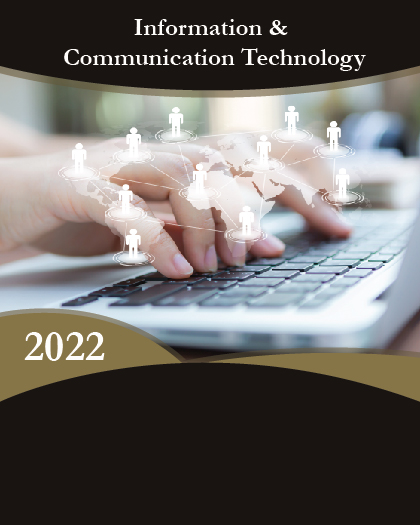
The report covers forecast and analysis for the geospatial imagery analytics market on a global and regional level
The report includes the positive and the negative factors that are influencing the growth of the geospatial imagery analytics market.
Future opportunities are discussed in the report.
The data within the report is provided in terms of value (USD Million).
The revenue generated by the prominent industry players has been analyzed in the report.
The market numbers have been calculated using top-down and the bottom-up approaches.
The geospatial imagery analytics market has been analyzed using Porters Five Forces Analysis.
The global geospatial imagery analytics market is segmented on the basis of type, technology, application, verticals, and region.
All the segments have been evaluated based on the present and the future trends.
The report deals with the in-depth quantitative and qualitative analyses of the geospatial imagery analytics market.
The report includes the detailed company profiles of the prominent market players.
Market Summary:
Geospatial analysis is a powerful tool which is widely used to address a number of issues including climate change modeling, weather monitoring, human population forecasting, and animal population management. Geospatial analytics is used for gathering, displaying, integrating, and examining the geospatial data. Geospatial analytics collect data from geotagging, GPS, satellite imagery, and from other sources for obtaining useful information which is important for organizations for taking better decisions which will, in turn, yield good revenue.
The geospatial analysis uses the data and information for the creation of graphs, making maps, cartograms, statistics, and for simplifying the complex relationships.
Value
The global geospatial imagery analytics market was valued at around USD 2,640 million in 2016 and it is expected to reach more than USD 21,200 million by 2024. The global geospatial imagery analytics market is expected to grow at a CAGR of around 30% between 2017 and 2024.
Drivers and Restraints
The major factor driving the growth of global geospatial imagery analytics market is the increasing advancement in analytics technologies. Increasing amount of data from global navigation satellite systems, aerial surveys using photographic cameras, satellite remote sensing, digital cameras, radar, and LiDAR is generating demand for geospatial imagery analytics. Deep learning and artificial intelligence (AI) helps to process the satellite imagery to identify objects and patterns automatically.
Strict implementation of government regulations is limiting the growth of the market. However, increasing use of location-based services is anticipated to boost the market over the forecast period.
Segmentation
The geospatial imagery analytics market has been segmented on the basis of type, technology, application, vertical, and region.
By type, the image analytics segment held the largest market share of around 60% in 2016. Growing trend of social media such as Facebook, Snapchat, Twitter, and others has increased the amount of unstructured data. This huge data needs to be analyzed and sorted which is done with the help of geospatial imagery analytical tools. Additionally, the growing number of AI-enabled smartphones equipped with facial recognition apps also create a need for image analysis. Barcodes and QR codes are some examples of image analytics. The image analytics segment is anticipated to value at around 12,000 million by 2024.
By technology, GIS (geographic information system) segment acquired the major share of 33% in the global geospatial imagery analytics market. A geographic information system is a basic technology for geospatial imagery analytics. This system is designed for analyzing, capturing, organizing, and manipulating the geographic data. GIS is being used widely due to its cost-effectiveness, better decisionmaking capabilities, enhanced geographic information recordkeeping, and improved communication.
The weather monitoring segment is anticipated to register the highest CAGR of 32% between 2017 and 2024. Rising need to measure weather variables such as wind speed and direction, air temperature, humidity, and rainfall are the key driving factors for the weather monitoring segment. Geospatial imagery analytics can detect the changes in climate and is able to provide the data to input into models which enables to predict the future changes in the environment. These factors will propel the growth of the weather monitoring segment.
By vertical, the government segment held the major market share of 22% in 2016. Geospatial imagery analytics play a vital role in the government segment, it assists in the planning of the roads and other amenities and also provides a map for the direction.
Europe accounted for the major share of 32% in 2016. Rapid digitalization across all industries and technological advancements have fueled the growth of the geospatial imagery analytics market. North America region is anticipated to grow with the highest CAGR of 33% over the forecast period. Geospatial imagery analytics offer benefits to the organizations by providing analyzed data. For the development of the smart cities, there is an increased requirement for exact base maps and utilities which is provided by the geospatial imagery analytics. Growing development rate of smart cities across the North American region is expected to boost the revenue of the geospatial imagery analytics market.
Industry Players
The report also covers detailed competitive outlook including company profiles of the key participants operating in the global geospatial imagery analytics market. The key players included in this market are Digitalglobe Inc., Environmental Systems Research Institute, EOS Data Analytics Inc., Fugro N.V., Geocento, Google Inc., Harris Corporation, Hexagon AB, Keyw Corporation Planet Labs RMSI, Satellite Imaging Corporation, Trimble Inc., UrtheCast Corporation, AABSyS IT Pvt. Ltd., AAM Pty Ltd., Damian Associates Inc., Marvel Geospatial Solutions Private Limited, Orbital Africa Limited, Rick Engineering Company, SECON Private Limited.
The prominent market players maintain the competitive edge in the global market by making investments in the mergers and acquisitions and by increasing their product portfolio. In February 2017, DigitalGlobe, Inc., a commercial high-resolution Earth observation and advanced geospatial solutions provider based in Colorado, U.S. signed an agreement for partnership with Esri and Harris Corporation which will enable Esri and Harris Corporation users to access, time-lapse library of high-resolution satellite imagery and the analytical and deep learning tools needed to unlock actionable insights from that imagery at scale.
























